As it creeps up on 1am, we reluctantly drain beers and each say our goodbyes. Not just handshakes, but embraces, a common occurence on fishing trips where kinships among strangers form faster than they do in the regular world. But there’s a current of guilt running through the small group of us that are headed out early in the morning for a daylong pilgrimage to the Blanco River.
We were originally scheduled to head out for the Blanco come Friday. But word of a significant storm is upon us, one that’s expected to dump several inches of rain on the valley—conditions which can make travel into basecamp considerably challenging. As a result, our host, Eduardo Guarda, has pushed our departure up one day in order to take advantage of the sunny, dry conditions forecasted for Thursday.
Which means we’re leaving a day early and Gary’s not coming. In fairness, Gary was never slated to join us on the Blanco, thanks to a wedding that was calling him back stateside. But we had one more day on the docket together, fishing the waters in striking distance of Magic Waters Lodge—the famed Simpson, Paloma, Mogote and Huemueles. But now we're pulling out early. Ditching, even. It is unavoidable, but it still feels wrong.
The middle section of Rio Blanco is some of the most untouched water in all of Patagonia. The lower reaches of the Blanco, near its confluence with Rio Aysén, are accessible by both road and jetboat. And a short stretch of the river’s uppermost section can be reached by portaging across Lago Caro, the river’s origin, and hiking downstream. But the vast middle river, which courses powerfully through a lush rainforest valley, is isolated. A series of waterfalls and sets of class V rapids make upriver access impossible and an impassable canyon and dense jungle make downriver hike-in access utterly impractical.
The steep, mountain-ringed valley that guards the middle Blanco is blanketed by Valdivian rainforest which, when combined with the Magellanic subpolar forests to the south, form the second largest temperate rainforest region on the planet. Only the expansive rainforests that span the Pacific coast of the North American continent from California to Alaska are larger. Valdivian forests are layered and impossibly dense. A canopy of beech, laurel and Winter’s bark eventually gives way to an impenetrable understory dominated by bamboos, tépu, giant rhubarb and man-sized ferns which make attempts at foot travel along much of the Blanco’s riverbank an exercise in futility and exhaustion.


Making your way to the middle Blanco requires persistence, patience and, occasionally, a tolerance for the unexpected. A scenic two-hour drive leads to a non-descript outpost on the lower river. There, every bit of gear, food and other supplies that will be needed for a five-day stay in the valley is stuffed into oversized, weatherproof sacks and loaded onto packhorses, which lead a caravan of horse-mounted guides, camp staff and anglers over the peaks that line the middle valley. After a three-hour traverse and descent into the valley, the week’s wares are loaded onto jetboats which motor the final hour upriver to basecamp.
For anglers that make the journey, the reward is one found few places on the planet—30 miles of pristine, unmolested, trophy trout water. Primarily a brown trout fishery, the Blanco’s wild, lucent waters regularly produce trout in the 20-24” range and are known to offer shots at specimens that grow 27” and larger.
Two at a time, we don waders and rain gear in the crowded gaucho’s shack that sits on cinder blocks at the lower river outpost and step out into downpour that wasn’t due until the following day. Wind rips through the lower valley, threatening to wrench the shack’s tin roof from its moorings. The storm, it seems, has arrived early.
“Never seen it blow like this here,” Monte Becker announces to no one in particular, confirming already well-held expectations that, despite our attempts to avoid precisely this scenario, we’re prepping to make the ride into basecamp in historically objectionable conditions.
Monte, an American expat who first arrived in the Coyhaique region in late 1980s—in the final days of Augusto Pinochet’s violent, dictatorial rule of Chile—is a household name in whitewater circles, having made some of the first descents down colossal Patagonian rivers like the Baker, Futaleufu and Biobio. To this day, Monte is the only oarsman that rafts the rapids of the nearby Rio Paloma.

Sensing the tension amongst our group of equestrian greenhorns, knowing smirks appear on the rain-soaked faces of the guides, who make the horseback trek into camp with regularity and have grown numb to its precarious nature. As gaucho Jorge Martel fits the tack on the final few horses in our team, we each climb clumsily onto our saddles and attempt to prepare for what’s to come.
Monte trots his horse up alongside us, marshalls our attention and reaches for a hand-hold on the rear of his saddle. He grasps it tightly and gives a sharp, upward tug and looks our way. “That’s how you hold on,” he says plainly, and rides off.
Eduardo only recommends the horse ride into camp for what he calls “adventurous anglers,” due to the difficult terrain. In typical conditions, however, the trip in is said to be exhilarating but ultimately uneventful, even if periodically shock-inducing for newcomers.
Anxieties become reality and we indeed meet the trail at its worst, a speculation that both Eduaro and guide Andy Manstein confirm at different points along the route. The relentless rain that falls, and that of the week prior, has made hillsides unstable; storm-borne runoff turns most of the route’s steep ravines into tumbling, ephemeral mountain streams; the trail’s ever-present mud has become so thick and voluminous that the horses sink their riders’ feet into the muck from time to time; and what are typically hock-deep, trickling creeks which the horses ford in stride have turned into unstable, gushing washouts.
But the horses, who have made this trip twice weekly, if not more, the better part of their adult lives, seem unfazed. For three hours, with the regularity of a rhythmic drumbeat, the horses defy physics. Whether descending a steep trail littered with shifting, basketball-sized boulders; plowing through rainforest mud that sinks all four legs to their shoulders; or making treacherous rock-to-rock jumps as we ascend sheer, rocky switchbacks; our transportation is sure-footed and hardy. We wait for the horses to stumble and fall, for legs to buckle and break, or for the rain-worsened mud to trap the team in an inescapable quagmire. But the horses, who know the trail better than the guides do, just soldier on, resolute and seemingly indestructible. Even the packhorses, each loaded down with likely 300 pounds of gear or more, show little sign of strain. Our jobs are simply to hold on, which we manage to do, thanks in no small part to Monte’s pre-trip tutelage.
Thanks to the condition of the trail and the deluge that continues to worsen as we ride, we arrive to Jorge’s austere ranch on the Blanco as evening threatens. Today, Jorge’s home and its corrals, other than the River of Dreams basecamp, are the only functioning human structures in the entire valley. Gear and supplies are quickly loaded onto the boats and we speed up-river.
Or, at least, we try to. The 5-6 inches of rain that the storm has dumped on the Blanco valley in the course of the day has already turned the river into a brown, frothy torrent. We motor upriver, with Monte on the tiller, dodging giant ferns, downed limbs and even entire trees that race downstream towards us. The battering flows of the blown out river send us two steps back for every three we take forward. The hour-long ride to camp takes two before we make it, but make it we do, weary and chilled, but spirited from having completed the pilgrimage.
We warm ourselves by the wood stove, sipping whiskey and warm beer, while Fernando and Helmut, who run the camp, get straight to work stoking the wood stoves, turning on the camp lights, firing up the hot water system and prepping dinner.


Like Monte, Andy is a migrant, having emigrated to Chile some twenty-odd years ago from Germany. The camp is Andy’s brainchild. Unreasonably comfortable, the camp is comprised of eight large tents, all built using a custom, arched, wood-frame construction of Andy’s design. The structures are more buildings than tents, with wood floors, framed doors and heaters. Clear and green vinyl weatherproofs the frames while providing window-like views and allowing the tents to flood with sunlight when it shines. The guest tents each have two large beds topped with down comforters, furniture for clothes storage and front porches with armchairs for sitting and admiring the river. The main tent is a large common room—with a sitting area, dining table large enough for 12 and a full-sized, separate kitchen in the back—where everyone at the camp gathers for cocktails, meals and late-night story sessions. In the rear of the camp, another building houses bathrooms and showers, efficiently eco-friendly, with composting toilets and electric, on-demand hot water heaters for the shower.
Everything you see as you marvel at Andy’s ingenious, German engineering—from the enormous wood beams that make the arched tent frames, to the chest freezers that store meat and fish in the kitchen, to the hot water heaters that offer piping hot showers at the end of each day—came in on packhorses over the course of the two years it took to construct the camp. In the middle of one of the most untouched valleys in Patagonia, the River of Dreams basecamp is a marvel, and this is certainly not roughing it.
The next morning, we wake late to the unwelcome sound of rain still pelting the vinyl roofs of our tents. The forecast had held that the storm would subside shortly after dark, giving the river—which clears quickly after even large storms thanks to the Blanco’s relatively steep gradient and compact watershed—a chance to return to angler-friendly shape by mid-afternoon. Instead, the Blanco has busted its banks entirely, depositing the boats on the lower reaches of the camp’s lawn. An opaque, turbid, conveyor belt carrying pieces of the valley forest, the Blanco is anything but fishable.
Much to our surprise, as we polish off a hearty breakfast of eggs, bacon and pancakes, Monty and Andy instruct us to wader up. A day we’d all assumed would be devoted to books and conversation would, after all, be spent fishing.
Basecamp has the good fortune of sitting at the confluence of the Blanco and an unnamed spring creek. While still at the lodge outside Coyhaique, we’d heard that the creek can offer a bit of fishing shelter when the river runs high or turns off-color. But we hadn’t expected anything within 30 miles to be fishable after the relentless downpour the valley had been under for more than a day.

As it turns out, the creek makes basecamp a near-weatherproof fishing destination, a true rarity in Chilean Patagonia where the uplift of the Andes and the damp, Humbolt current that rolls of the Pacific bring frequent, heavy rains which can blow out rivers and dictate the fishing, or lack thereof. As our guides explained, with the Blanco raging by as if a massive hydropower dam had burst upstream, not only would the creek be fishable—it would be in ideal condition.
The creek, which Eduardo has taken to calling Paradise Spring Creek, flows through pasture that runs behind camp where Jorge grazes some of his cattle. The pasture-lined banks, unlike the pathless jungle understory that lines the Blanco, make angler access easy. On a normal day anglers can walk the creek—a not-to-be missed diversion in its own right—and cast mouse patterns, big dry flies or streamers to the creek’s fat, resident brown trout. When the Blanco runs high, and especially when it blows out completely, the creek floods with rainwater and backflow from the river. Even in the worst conditions, the creek’s waters remain clear.
But the true miracle of the spring creek isn’t its clarity, it is the flood it spreads into Jorge’s pasture. As the floodwaters bathe the bovine-trimmed grasses, the creek’s brown trout wade into the shallows to chase all manner of delicacies that are normally beyond their grasp—beetles, grasshoppers, grubs and more. The trout gorge with abandon, so distracted by their mission to unearth the pasture’s ambrosia that they enter an almost trancelike state. It’s not uncommon to stand at the edge of the floodwaters and have a trout fin by, unaware and feeding happily only a few feet away.

Andy lashes a mouse to the end of my seven-weight and we quarter it across a section where the creek is still more creek than grass flat. A meaty brown trout slashes at the mouse on the first cast. It misses, but doesn’t on cast two—and we marvel at its sparsely-spotted, dark-sided heft before releasing it back into the rain-swollen creek. We work downstream, taking a shouldered trout from each bend. In less than 30 minutes, we bring half a dozen fish to hand, each of which chase down various mouse patterns with the abandon of a Kamchata rainbow.
As someone who believes that catching a voracious trout on a surface-skated mouse is the most fun you can have with a fly rod, I’m loathe to try other methods at Andy’s prompting, and we spend the better part of the day swimming rodents across different parts of the creek, finding success virtually everywhere. Back at camp that night, over a dinner of tenderloin, risotto and rich Chilean red wine, the other anglers recount their days—taking trout on big, foam dry flies; connecting with silver-sided river fish by swinging streamers where the creek’s clear waters meet the turbid, still brown flows of the Blanco; and even, somewhat unsurprisingly, fooling a meadow-grazing trout by slowly stripping a bonefish fly through submerged pasture grass.
By the time the sun warms the green tops of our cabins the next morning, the Blanco has transformed. At least seven feet of riverbank that were submerged the evening before have been unearthed by the river’s receding flows and its opaque, chocolate brown mire has been replaced by translucent, emerald green water.
With rain on tap again overnight, we motor almost the full length of the river, to the uppermost navigable reaches of the middle Blanco, planning to float back to camp and take in as much of the Blanco as we can. As one often does on sprawling, fast-moving mountain rivers, we mostly swing streamers through pocket water and along the river’s edge.



We draw storm-battered trout from their shelters among the rocks and under cutbanks, missing more grabs than we connect on. The fishing is good, if a bit slower than usual. The near two-day onslaught of debris no doubt has the river’s trout tired and weary. Still, by day’s end, we boat our fair share of beautiful, cloud-colored trout but coax out only a couple of the river’s true beasts—and simply seeing them is enough to make us pray for more good river days to come.
The break in the weather prompts Jorge to make an evening run upriver from his ranch with a quarter side of beef, which he stakes in the ground over a wood fire and patiently tends to for hours. Before the meat is done roasting over the flames, the rain has returned and we resign ourselves—almost giddily—for another day spent on the creek.
By morning, the Blanco is colored-up and high again. This time a chestnut-tinged grey rather than a roily chocolate brown, but still far too off color and running too fast to be welcoming to anglers. And so as steady but peaceful droplets shower our jackets and hat brims, we head again to the creek, eventually walking all the way to its source—a spring tucked tight against the mountainside where Jorge’s pasture yields to the rainforest.

We work four abreast, traipsing through the meadow along the edge of the floodwater, while Monte and Liz work the far side of the bloated creek using one of the rafts. They’re out of earshot but well within eyeshot, and so victories by one party elicits hoots and hollers from the other. For hours, we take turns spotting and stalking tailing fish or feeding fish; casting big beetles, chubbies and deer hair attractors; catching more than we spook. The sheer volume of opportunities lends such freedom of spirit that the experience seems almost sublime. We experiment, pass on smaller fish in favor of larger ones, creep closer than we need to just because we can, try flies just to see if they’ll work. We take breaks when we want to, uncompelled to obsess over every target the creek offers. The fish we catch, we catch. The ones that get away, get away. Most of all, we laugh, and make memories we’re not likely to lose hold of even if we had another lifetime in which to forget them.
That night, we polish off more Chilean wine than we should while recounting the stories of the day. The rain has once again subsided, creating ambiguity about tomorrow’s plan. But, for the first time during the week, there’s no talk of the weather. Or of what the next day holds. After three days in the valley, the group has learned that in truth, there are two Rivers of Dreams, both footfalls from our cabins. We don't know which tomorrow will bring. And we don't care.
If You Go
Choosing an Outfitter
Choosing an outfitter when traveling to remote destinations is never easy, except when your destination is the middle Rio Blanco river valley. The River of Dreams basecamp is the only outfit that fishes the middle Blanco. You can learn more here.
When to Go
The River of Dreams basecamp operates November through April each year.
How to Get There
The trip to the middle Blanco starts in Coyhaique, Chile. Multiple daily, non-stop flights to Coyhaique are available from Santiago, Chile—which is reachable via international flights from countless destinations around the world. In addition to the aforementioned car, horseback, and jetboat pilgrimage to the River of Dreams, anglers can access camp via chartered helicopter.




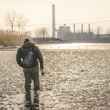
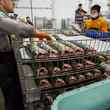

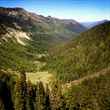



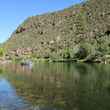
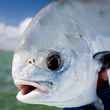



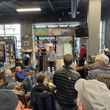
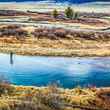



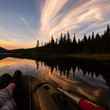
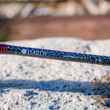



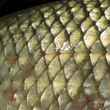
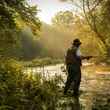
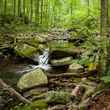
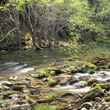
Comments
Gary replied on Permalink
Man! I SO wish I could have went on the second weeks trip. So much fun on the first week though. Great to hang out with all of you! What a wonderful lodge, and great guides. I will be back.
Pages